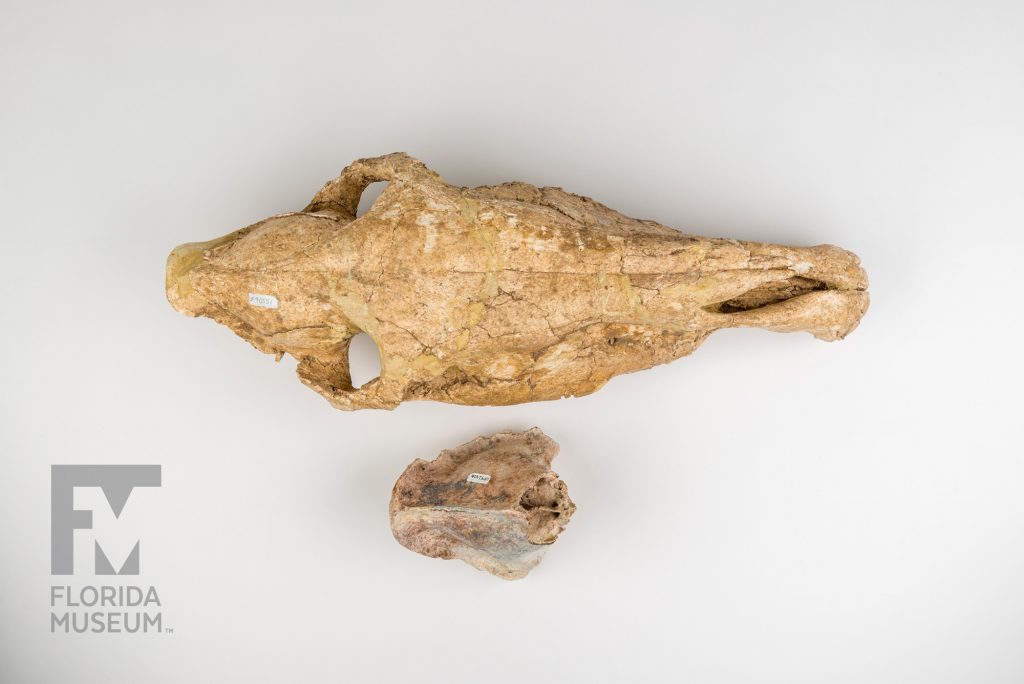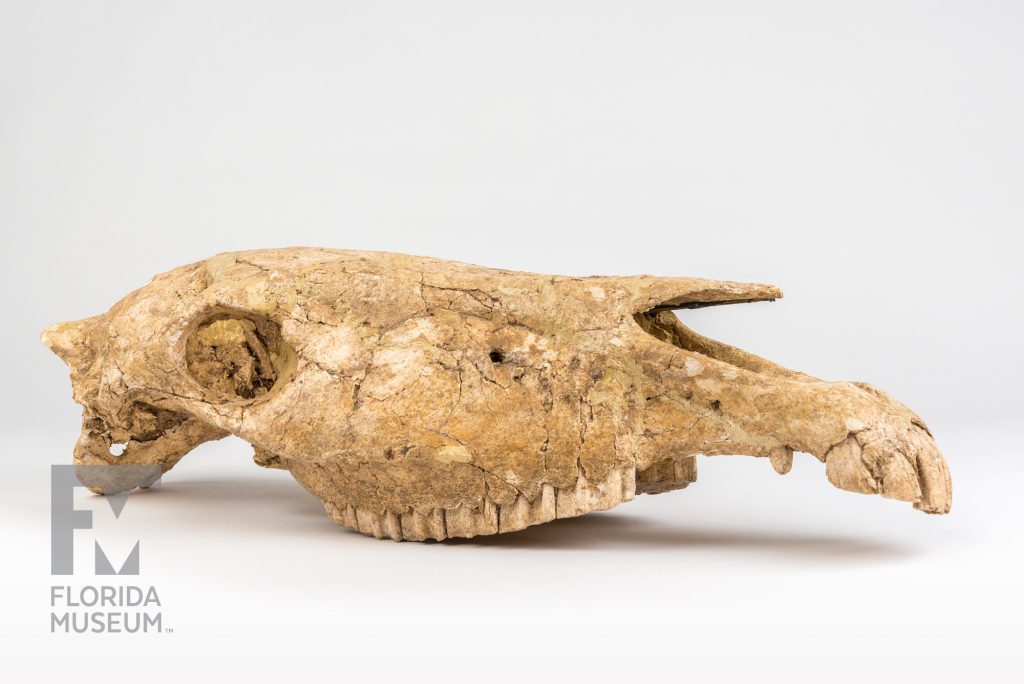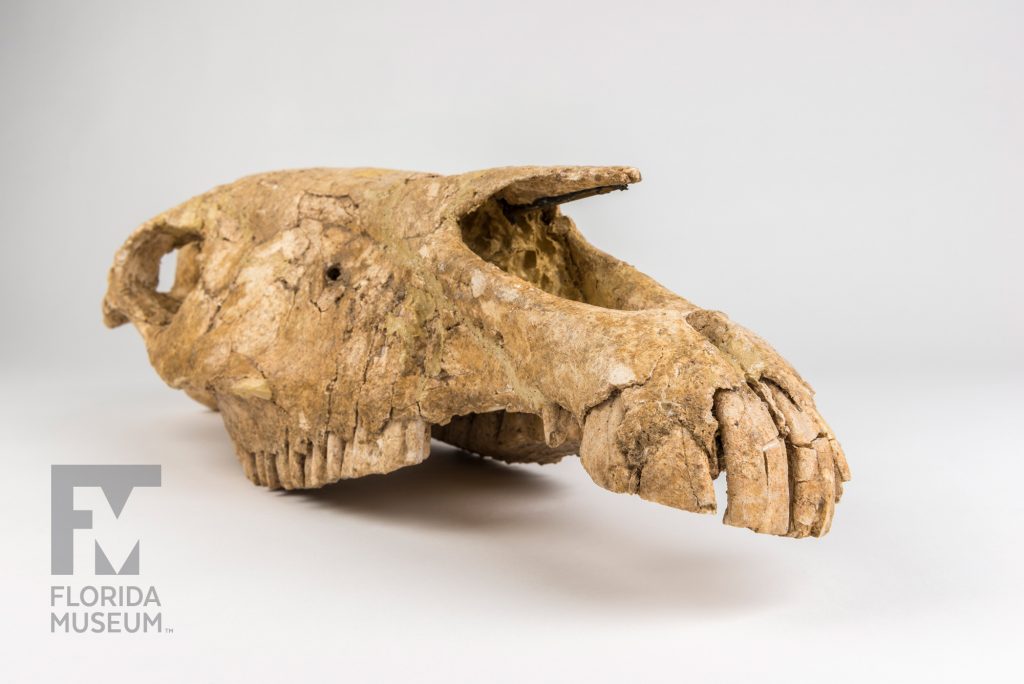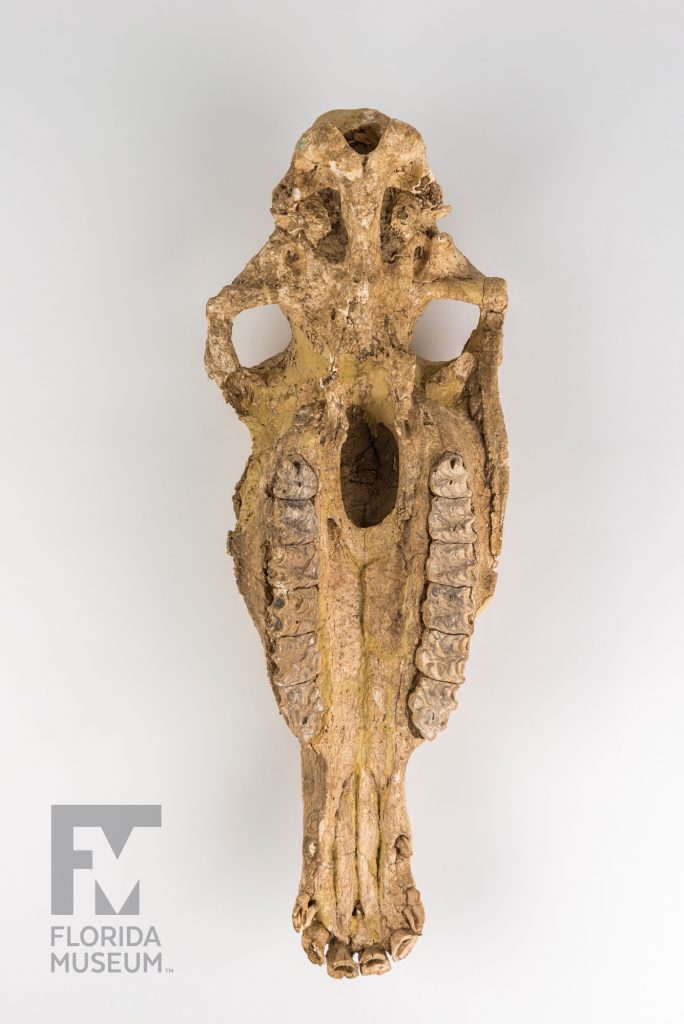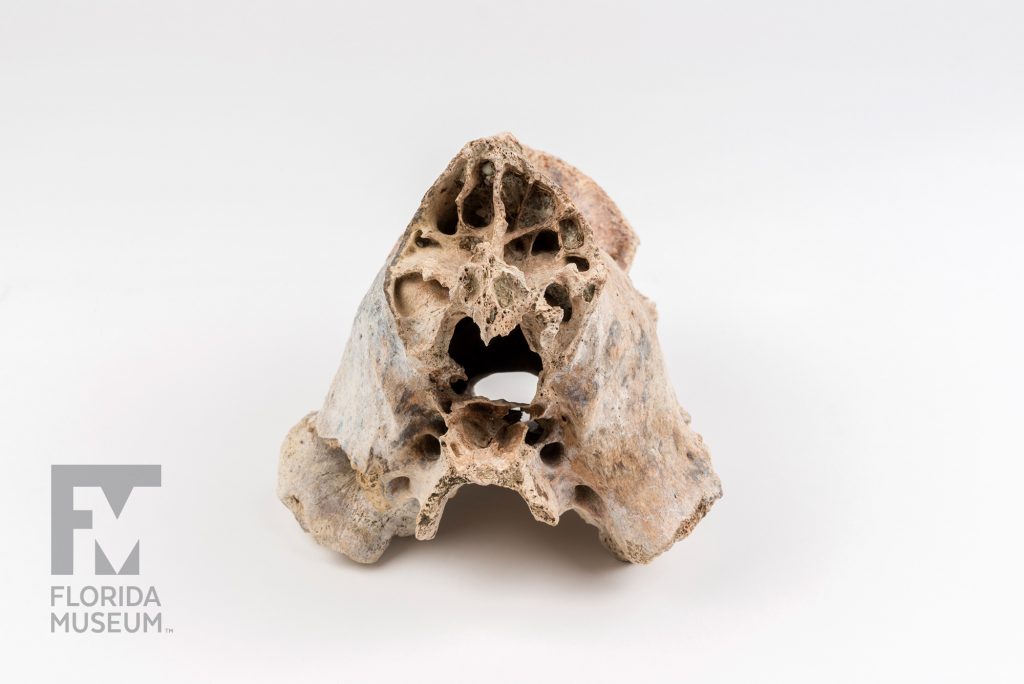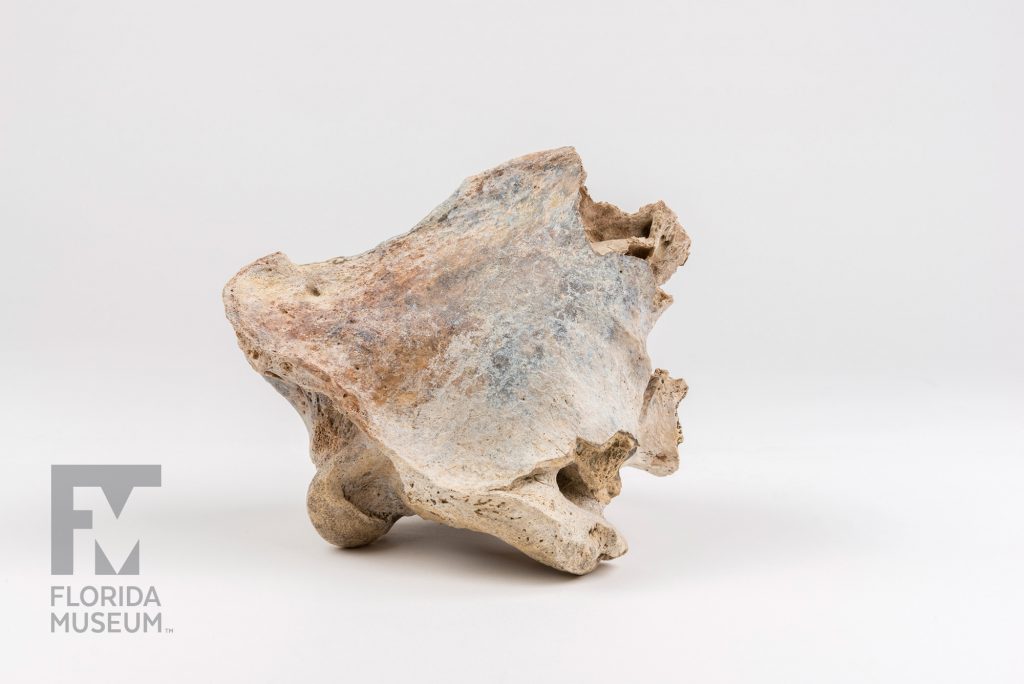Horses evolved in North America and traveled south during the interchange, later becoming extinct in the Americas before Spaniards reintroduced the horse we know today. Saber-toothed Cats also migrated south, where they thrived on new prey options.
Summary
Horse Skull (Equis insulatus)
From Tarija, Bolivia
Lived ~750 thousand years ago
Saber-toothed Cat Skull Fragment (Smilodon populator)
From Tarija, Bolivia
Lived ~750 thousand years ago
Collection
Story
So horses are generally thought by the public to have been introduced to North America about 500 years ago by the Spaniards, but as paleontologists we know that horses actually evolved in North America over the past 50 million years. They migrated outside of North America into the Old World, they also migrated into South America after the formation of the Isthmus of Panama a couple of million years ago.
In addition, the Saber-toothed Cat skull that you see here represents an animal that, along with horses, also migrated into South America across the Isthmus of Panama during what’s called the Great American Biotic Interchange.
Bruce MacFadden
Curator, Vertebrate Paleontology*
Distinguished Professor*
Florida Museum of Natural History
Exhibit
On display Sept. 23, 2017-Jan. 7, 2018, Rare, Beautiful & Fascinating: 100 Years @FloridaMuseum celebrated the Museum’s rich history. Each Museum collection was asked to contribute its most interesting items and share the stories that make them special. Though the physical exhibit is closed, this companion website remains online, providing an opportunity to experience the Florida Museum’s most treasured specimens.
Exhibit Area: Objects Tell Stories
Theme: Great American Interchange
 Want to see more? Explore more than 300 breathtaking color photos of plants, animals, fossils and cultural heritage materials from the Florida Museum of Natural History’s collections in the award-winning book All Things Beautiful available from the University Press of Florida.
Want to see more? Explore more than 300 breathtaking color photos of plants, animals, fossils and cultural heritage materials from the Florida Museum of Natural History’s collections in the award-winning book All Things Beautiful available from the University Press of Florida.
*This title was accurate at the time the exhibit was on display in 2017. Please visit the collection website to verify current staff and student information.
